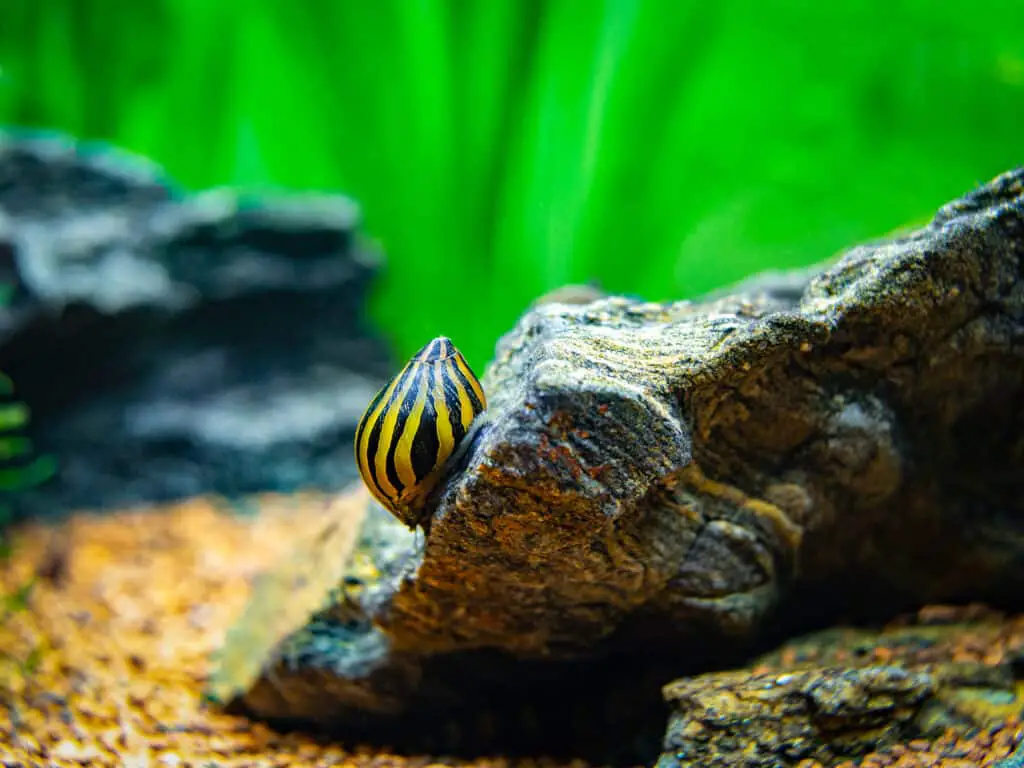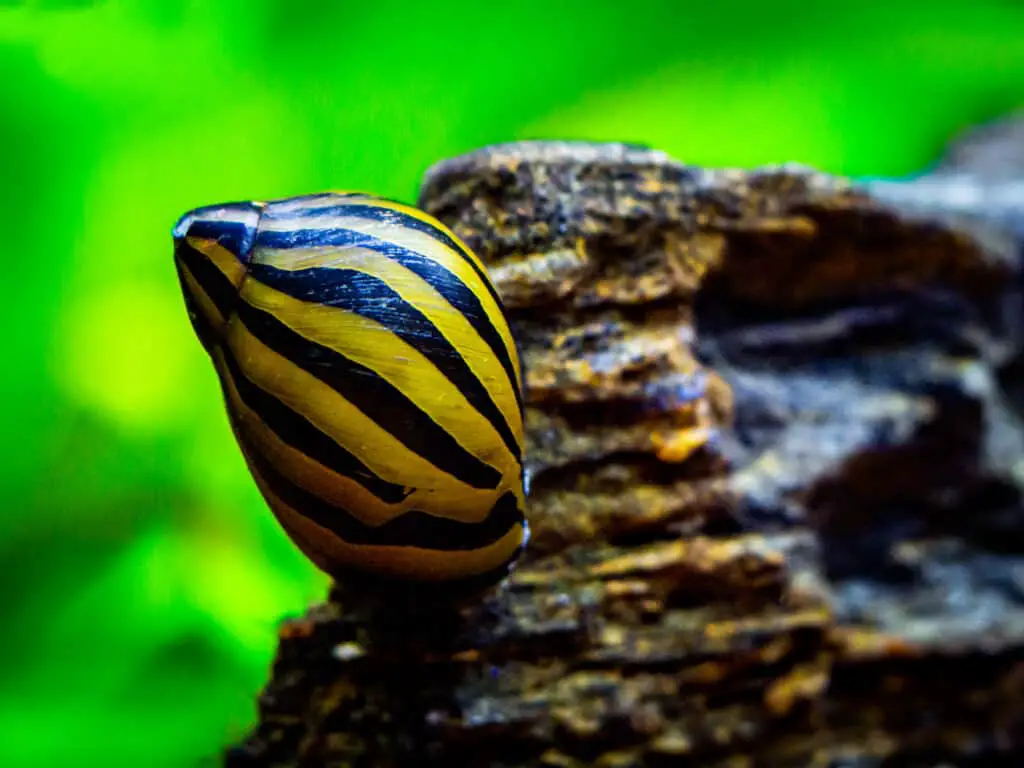
Aquarium snails can be a unique and interesting addition to many aquariums, providing a different visual and some color.
They can also give almost any tank an additional clean-up crew, removing leftover food and depending on the species control algae.
However many enthusiasts may be fearful of adding snails to their tanks because of their nature of being able to grow their populations rapidly.
Aquarium snails can have their reproduction rates and frequencies limited by both tank environment and human interaction.
Some of the best snails that can have their populations easily held in check are Nerite Snails and Mystery Snails.
However, many aquarists will label Nerite Snails as the most optimal choice for having snails in a tank while limiting the population growth.
Let’s explore the Nerite Snail, and the Mystery Snail to see how their populations can be kept in check in your tank, and why Nerite Snails are in most cases the best choice for a snail where population control is the greatest concern.
How Snails Reproduce in Aquariums
Understanding how snails can be chosen for limited reproduction, and knowing how to intervene to limit the population growth, requires knowing how snails tend to reproduce.
For most species found in the aquarium hobby, the snails will lay clusters of eggs, in which hundreds of eggs can be present.
The location of the snails will vary depending on the species, for instance, Mystery Snails require the eggs to be laid above the water surface, where they will be kept moist, but not underwater.
Because the majority of snails are egg layers, instead of livebearers it is possible to limit the reproduction of the snails with interaction much easier.

Nerite Snails: The Ideal Choice For This Circumstance
The question is then why are Nerite snails the ideal choice for tanks that want a controlled, or limited snail population when adding?
The answer is simple, Nerite snails are nearly impossible to breed in a true freshwater tank.
When Nerite snails reproduce, like most snails they lay eggs, which in time develop into a larvae stage.
It is within this stage that the larvae ideally need brackish water conditions.
For most tanks, this is not the case, as usually freshwater tanks will be completely freshwater without the precedence of salt.
Because of the brackish water need, a Nerite Snail population can be greatly controlled as it won’t be able to have a complete reproduction cycle.
The downside to this is if you want to increase the population at some point, it will require in most cases the purchasing of new Nerite snails, rather than being able to breed them yourself.

Mystery Snails: When Physical Intervention is Possible
You may be wondering, Mystery Snails? But they are probably most synonymous with snail population explosions and being able to reproduce rapidly.
So why can they be considered a snail species that can have their reproduction limited?
Well, there are two reasons why the Mystery Snails can be justified.
The first reason is the recognizability of the Mystery Snail egg clusters that can be easily removed from the tank.
These semi-large, white patches of eggs are normally easy to see even in the busiest tanks.
These can simply be removed from the tank, either by hand or a glass scraper which can assist in removing the eqq cluster off the glass.
The other reason the Mystery Snails population can be held in check is to keep the water levels of your tank as high as possible.
As mentioned earlier, Mystery Snails require their egg clusters to be put above the water line, however, if you keep your water levels to a point where there is no space between the water and the top of the tank, then the Mystery Snails will either not lay any more eggs or the eggs will not be viable because they will be kept submerged.
Managing a Snail Population By Limiting Overfeeding
Regardless of the species you choose for your tank, it is also important to remember that keeping your tank from being optimal for an explosion in your snail population is another vital tool.
One main staple of population growth is the availability of food for new snails and existing snails.
When tanks are overfed, this can result in additional resources for new tank members, allowing for the snail populations to easily grow as the necessary resources are available to sustain a larger group.
Making sure that you are feeding properly to your current inhabitants, will increase your chances greatly of controlling a snail population in your tank.
Choosing the Right Snails for Your Fish Tank
Your tank is a living ecosystem, so factors like other tank inhabitants and individual tank needs should be taken into account when choosing which species is right for you.
You then can decide based on what your goals are for your snails, in terms of how to limit their population size.
If you want to have everything controlled naturally, where there is little to no worry in a growing population, then Nerite snails would be the best choice for you, if your tank can have them.
This is an excellent choice if you also want some algae control added to your fish tank.
If you don’t mind having to intervene by removing the egg clusters or making sure that your tank is filled all the way, then another species such as Mystery snails would be an option because of where they lay their eggs.
This will also allow you in the future to be able to grow the population much easier if you end up wanting to.
Final Thoughts
There are many different species available when talking about aquarium snails that all have different requirements when it comes to breeding.
Knowing these requirements can enable you to limit the population size, however how you can will vary.
Proactive solutions such as limiting overfeeding, keeping tank water levels topped off, and creating environments where breeding is not possible, as well as reactive solutions such as removing egg clusters, are all options when wanting to limit populations of snails are all worth trying and makes main snails available as choices.
It comes down to how much risk you want to take in the possibility of an increased population size, and how much personal time and intervention is required and are willing to do.
